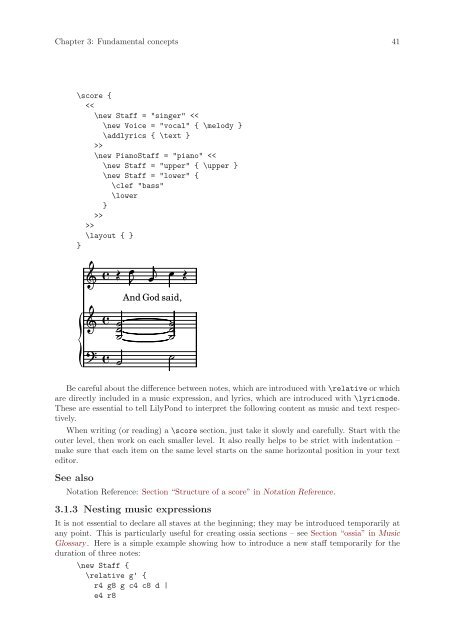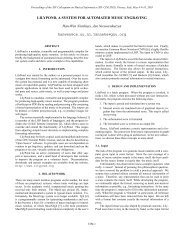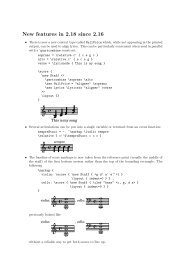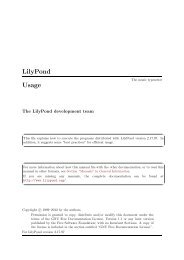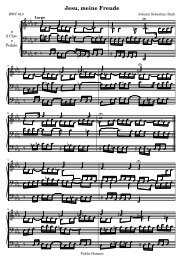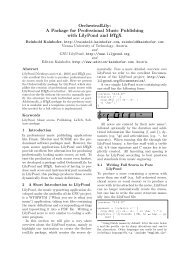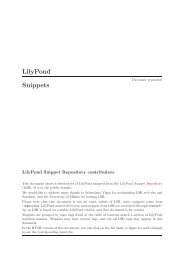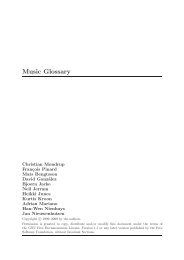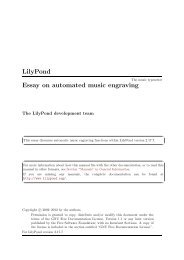Create successful ePaper yourself
Turn your PDF publications into a flip-book with our unique Google optimized e-Paper software.
Chapter 3: Fundamental concepts 41<br />
\score {<br />
<br />
\new PianoStaff = "piano" ><br />
>><br />
\layout { }<br />
}<br />
�<br />
�<br />
�<br />
�<br />
� �<br />
�<br />
�<br />
��<br />
�<br />
�<br />
�<br />
�<br />
�<br />
�<br />
�<br />
And God said,<br />
��<br />
�<br />
�<br />
�<br />
Be careful about the difference between notes, which are introduced with \relative or which<br />
are directly included in a music expression, and lyrics, which are introduced with \lyricmode.<br />
These are essential to tell <strong>LilyPond</strong> to interpret the following content as music and text respectively.<br />
When writing (or reading) a \score section, just take it slowly and carefully. Start with the<br />
outer level, then work on each smaller level. It also really helps to be strict with indentation –<br />
make sure that each item on the same level starts on the same horizontal position in your text<br />
editor.<br />
See also<br />
Notation Reference: Section “Structure of a score” in Notation Reference.<br />
3.1.3 Nesting music expressions<br />
It is not essential to declare all staves at the beginning; they may be introduced temporarily at<br />
any point. This is particularly useful for creating ossia sections – see Section “ossia” in Music<br />
Glossary. Here is a simple example showing how to introduce a new staff temporarily for the<br />
duration of three notes:<br />
\new Staff {<br />
\relative g' {<br />
r4 g8 g c4 c8 d |<br />
e4 r8


